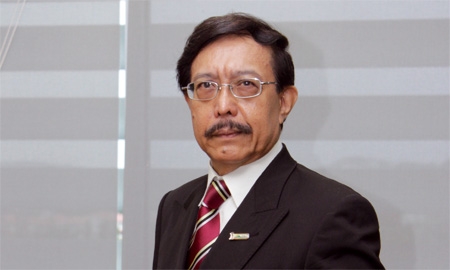With its great abundance of natural resources as well as its geo-strategic position in East Malaysia, the state of Sabah is one of the Southeast Asian country’s most promising in terms of generating economic growth.
That is why in January 2008 the Malaysian government inaugurated the landmark Sabah Development Corridor (SDC), a project that aims to turn the area into a gateway for trade, investment and tourism.
Expected to take 18 years, by the first quarter of 2014, RM128 billion (£24 billion) in investments had been planned and committed to, and of this, some RM38 billion had been realised. Around 900,000 jobs are expected to be created along with a waterfront city, a tourism sub-project and a new railway terminal. While the initial focus is on enhancing Sabah’s liveability index and making it a business friendly location via targeted infrastructure upgrading and by lowering the cost of doing business, in the long term (or by 2025 to be exact), the SDC initiative aims to triple Sabah’s gross domestic product (GDP) per capita and increase its GDP by four times.
As part of the five economic corridors throughout Malaysia – inspired by the former Prime Minister Abdullah Ahmad Badawi – the SDC will look to enhance the quality of life of people in Sabah by accelerating the growth of the economy, promote regional balance and bridge the rural-urban divide while ensuring sustainable management of the state’s resources, namely its vast oil and gas reserves, as well as its rich agricultural land.
The Sabah Economic Development and Investment Authority (SEDIA) is the government body entrusted with driving the SDC under the theme ‘Harnessing Unity in Diversity for Wealth Creation and Social Well-Being’, and is working closely with investors in the region to help the project realise its ambitious objectives.
“Since the introduction of the Corridor, we have seen increasing interest of investors in SDC,” says President of SEDIA, Datuk Yaakub Johari.
“I think the most important thing is the confidence that investors can perceive for the first time. The Sabah state government and the federal government are working in unison, speaking the same language to attract investment and support the private sector. I think this is crucial.”
Based on the alignment with the national agenda under the Economic Transformation Programme (ETP) and the National Key Economic Areas (NKEAs) to transform Malaysia into a high-income nation by the year 2020, the key focus areas of the SDC are agriculture, tourism, logistics and manufacturing; oil, gas and energy; higher education, and palm oil. Best known for its cultural heritage and natural endowment, Sabah has great potential in the services industry and resource-based business ventures.
SEDIA has designated six Strategic Development Areas (SDAs) in Sabah, each one with specific fiscal incentive packages for investors. Along with Greater Kota Kinabalu, which serves as the main growth pole, the other areas are the Bio-Triangle, Agro Marine Belt, Interior Food Valley, Kinabalu Gold Coast Enclave, and Brunei Bay Integrated Development Area and Oil and Gas Clusters.
“The federal government has been allocating development funds to kick start the various areas which we identified as having potential to act as a locomotive for regional growth,” explains Mr Johari.
“Each of these SDAs has its own projects or economic clusters and these are the locations that will act as the sites prepared for investment through specific fiscal incentives and infrastructures provided. Development through these projects will then transmit development impulses to the hinterland. The six clusters are economic clusters, which will then transfer the development impulses to the whole state, and each economic zone has its specific focus. For example, within the interior sub-region there is the Interior Food Valley, where we have started specific livestock projects.”
Aside from Sabah’s fertile agricultural land which serves the Interior Food Valley, the state has considerable marine resources and forests that offer great potential in resource-based manufacturing activities such as the timber and wood-based industry, as well as biotechnology industries. Additionally, almost 30 per cent of Malaysia’s oil palm production comes from Sabah, meaning the SDC has designated two palm oil industrial clusters.
“The reason for having two palm oil industrial clusters is because these are really the economic ‘palm-oil belt’ of Malaysia,” says the President of SEDIA. “Those areas will really add value, leverage and transform the palm oil sector, so that we can start gaining traction also in the bio-tech sector. For example, there is a lot of interest in the use of biomass from the palm oil waste so it becomes another commodity, another economic resource.”
Perhaps the most important economic cluster in the SDC though is oil and gas. In recent years, the oil, gas and energy sector has been a hive of much activity, with the commencement of various projects such as the Sabah Oil and Gas Terminal, Sabah Sarawak Gas Pipeline and Kimanis Power Plant projects.
“Sabah is the logical choice for this oil and gas cluster, because a quarter of Malaysia’s petroleum and natural gas is actually in Sabah’s water,” asserts Mr Johari. “However, in the past there has been no downstream processing of the oil and gas industry here. Thanks to the initiatives under the Sabah Development Corridor we now have these clusters. The oil and gas industry is a new area in which processing gas is on schedule by 2015.”
Away from natural resources, Sabah is also looking to leverage its natural beauty in order to attract both investors and tourists, especially in the areas of eco-tourism and cultural tourism. Sabah is blessed with over 2,000 flora species, Southeast Asia’s tallest peak (the UNESCO heritage site Mount Kinabalu), pristine national parks, beautiful beaches and also has access to the world renowned Coral Triangle near Sipadan Island.
The Kinabalu Gold Coast Enclave is the area of the SDC which is dedicated to tourism development, with plans for high-end resorts, holiday homes and the establishment of leisure and creative industries. 
0 COMMENTS